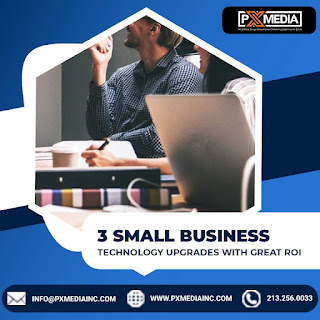How to Design Email Newsletters That Convert
How
important are email newsletters to your conversion rates? Well, if you’re like 59% of other marketers, then email is the single most effective
marketing channel for generating revenue.
That
statistic alone makes it clear that email marketing deserves our attention. But
there are a lot of aspects to factor into designing an email that actually does
something, rather than one that goes more or less directly to the “spam”
folder.
Here are
five pointers on how to design email newsletters that actually convert,
starting from the ground up.
Brand Everything
Obviously,
you’ve worked hard at establishing a relationship with your customers, and that
should be reflected in your emails. If they’ve signed up for that newsletter,
they know who you are and what they can expect. Once you’re writing the email,
it is not the time to play coy.
Brand,
brand, brand.
Your
customer should know exactly who that email is from, and what it’s likely to
involve. Include your header image as well as a logo to communicate your brand, and the colors and graphics that are
identified with your brand.
Each
newsletter that you send is another opportunity to build your brand, which in
turn increases the conversion rate as your clients build their relationship
with you.
Craft Your “From” And Subject Line
It’s important
to focus on conversion right from the get-go. After all, if people don’t even
open your email, what are the chances that all your super-spiffy conversion
tricks inside will actually have an effect?
The chances
are very low indeed, let’s just put it that way.
So it’s
important to “pitch” your emails in a winning formula from the very beginning.
There are two ways to do that:
· Use a “from”
that they will recognize. If they signed up to get emails from your company
website, then make sure the company name is involved. Patreon is a good example
of this, in that they send out emails that use both the personal name of who
the email is from, and then append “from Patreon” (ie. “Taryn from Patreon”) to
include that recognizability.
· Make the
subject line something that catches attention in a personal way, rather than
just an “Open now for the chance of a lifetime!” generic catch-all that could
be from anywhere. A good example is the email setup from the Institute of
Children’s Literature, which capitalizes on the already-known interest of its
email list and hits individual points that will capture interest (ie. “Pitches
that sell for the third grade market”).
A tip that
may be more unexpected — but still actionable — is to include an emoji in the
subject line. However you may feel about emojis on a personal level, the
statistics show that they contribute to a higher open rate than those which don’t include an emoji.
Perhaps
“emoji” is the new language of marketing.
Be As Non-Generic As Possible
Ignore the
fact that this is a fairly “generic sounding” tip, because there’s a reason for
it. What’s generic for one type of newsletter is ground-breaking for another;
“generic” is very subjective to the type of email you’re sending out, the
market and audience you’re writing for, and the subject matter in general.
Email
newsletters are a popular marketing and reputation management
option, so there are naturally a ton of
them out there. And, also naturally, this means that it’s far easier to be
generic than it is to be unique.
This is
something that requires attention on every level, to every detail. Starting
from the general layout of the email, to how it’s broken up, what is included,
and even how it’s closed out.
This is
where a little research comes in handy. Take a look at other email newsletters
out there, especially in your niche market, analyze how they tend to look, and
then don’t do that.
The last
thing you want is for your email to look exactly like everyone else’s. Things
that don’t stand out get sent to the spam folder.
Include Lots of Images
In terms of
attention paid to content, images are the reigning kings of all types of
marketing, and email newsletters are no exception.
It’s a fact
that we process images far faster than text
content. And it’s also a fact that the
audience who is reading your email has a short attention span; statistics indicate that we tend to skim content to see if there
is anything immediately relevant to us personally (don’t say you don’t do that,
because we all do), and back-click out of there in less than a minute.
So top-load
your emails with relevant, eye-catching images, and include textual content in
the form of links to further information. It’s a great way to catch the
attention and then improve the click through rate.
Use button-based CTAs
Those links
can be highly effective, but even more effective is a button CTA. This has been
tested and proven in email newsletter trials which show that the button CTA is 28% more likely to promote conversion.
The exact
reasons for this may vary, but it likely has something to do with the fact that
it’s much harder to miss a button than it is to miss a link. Bigger is better,
in this case.
Converting With Email
Conversion
can be a tricky business. But there are definitely ways to heighten the likelihood
of turning a reader into a consumer. And capitalizing on email newsletters —
which already have a built-in interest factor, since the reader has signed up
for the email to begin with — makes sense from a conversion standpoint.
All it takes
is attention to detail to carefully craft an email newsletter that is designed
to convert.
Content is originally posted at https://www.pxmediainc.com/how-to-design-email-newsletters-that-convert/
Labels: logo to communicate your brand










